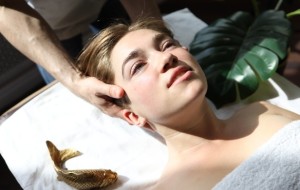Aesthetic Treatments for Every Age: Tailoring Beauty Solutions to Your Needs
This article explores the evolving landscape of aesthetic treatments, emphasizing personalized beauty solutions tailored to different age groups
Understanding Aesthetic Treatments
The Evolution of Aesthetic Treatments
Aesthetic treatments have evolved significantly over the years, transitioning from invasive surgical procedures to a wide array of non-invasive and minimally invasive options. This evolution has been driven by advancements in technology, a deeper understanding of human anatomy, and a growing demand for personalized beauty solutions. The modern landscape of aesthetic treatments offers a diverse range of options that cater to various needs, preferences, and age groups, making beauty enhancements more accessible and tailored than ever before.
The Science Behind Aesthetic Treatments
At the core of aesthetic treatments lies a blend of art and science. These procedures are designed to enhance physical appearance by addressing specific concerns such as wrinkles, skin laxity, pigmentation, and volume loss. The science behind these treatments involves understanding the skin's structure, the aging process, and how different interventions can stimulate collagen production, improve skin texture, and restore youthful contours. Techniques such as laser therapy, injectables, and radiofrequency treatments are grounded in scientific principles that ensure safety and efficacy.
Types of Aesthetic Treatments
Aesthetic treatments can be broadly categorized into surgical and non-surgical procedures. Surgical options, such as facelifts and liposuction, offer dramatic results but require longer recovery times. Non-surgical treatments, including Botox, dermal fillers, chemical peels, and laser resurfacing, provide subtle enhancements with minimal downtime. Each type of treatment has its own set of benefits and limitations, and the choice depends on individual goals, the extent of correction needed, and personal preferences.
The Role of Personalization in Aesthetic Treatments
Personalization is a key aspect of modern aesthetic treatments. No two individuals are alike, and neither are their beauty needs. Tailoring treatments to suit individual characteristics, such as skin type, age, and lifestyle, ensures optimal results and enhances patient satisfaction. Personalized treatment plans are developed through comprehensive consultations, where practitioners assess the patient's concerns, expectations, and medical history to recommend the most suitable interventions.
Safety and Ethical Considerations
Safety is paramount in aesthetic treatments. Practitioners must adhere to strict guidelines and protocols to minimize risks and ensure patient well-being. This includes using FDA-approved products, maintaining sterile environments, and staying updated with the latest techniques and technologies. Ethical considerations also play a crucial role, as practitioners must provide realistic expectations, avoid over-treatment, and prioritize the patient's health and safety above all else.
The Psychological Impact of Aesthetic Treatments
Beyond physical enhancements, aesthetic treatments can have a profound psychological impact. Many individuals seek these treatments to boost self-esteem, improve confidence, and address insecurities. The psychological benefits can be significant, leading to improved social interactions and overall quality of life. However, it is essential for practitioners to assess the patient's motivations and ensure that expectations are realistic to prevent potential dissatisfaction or psychological distress.
Aesthetic Treatments in Your 20s: Prevention and Maintenance
Understanding Skin Needs in Your 20s
In your 20s, your skin is generally at its peak, characterized by a natural glow and resilience. However, this is also the time when the groundwork for future skin health is laid. Understanding your skin type and its specific needs is crucial. Oily, dry, combination, or sensitive skin types each require tailored care to maintain balance and prevent future issues.
Importance of Sun Protection
Sun protection is the cornerstone of any skincare routine in your 20s. Daily use of a broad-spectrum sunscreen with at least SPF 30 helps prevent premature aging, sunburn, and reduces the risk of skin cancer. Incorporating sun protection into your daily routine, even on cloudy days or when indoors, is essential for long-term skin health.
Hydration and Moisturization
Keeping the skin hydrated is vital for maintaining its elasticity and youthful appearance. Using a lightweight, non-comedogenic moisturizer can help maintain the skin's moisture barrier without clogging pores. Drinking plenty of water and using hydrating serums with ingredients like hyaluronic acid can further enhance skin hydration.
Introduction to Anti-Aging Products
While significant anti-aging treatments may not be necessary in your 20s, introducing products with antioxidants like vitamin C can help protect the skin from environmental damage. These products can also brighten the complexion and even out skin tone. Retinoids, in low concentrations, can be introduced to promote cell turnover and prevent early signs of aging.
Acne Management
Acne can persist into the 20s, requiring targeted treatments to manage breakouts and prevent scarring. Over-the-counter products containing salicylic acid or benzoyl peroxide can be effective. For more persistent acne, consulting a dermatologist for prescription treatments or professional procedures like chemical peels may be beneficial.
Professional Treatments
Professional treatments can complement at-home skincare routines. Regular facials can help maintain clear skin and address specific concerns. Microdermabrasion and light chemical peels can enhance skin texture and tone. Laser treatments may be considered for more persistent issues like acne scars or pigmentation.
Lifestyle Considerations
A healthy lifestyle significantly impacts skin health. A balanced diet rich in antioxidants, regular exercise, and adequate sleep contribute to a radiant complexion. Avoiding smoking and excessive alcohol consumption can prevent premature aging and maintain skin vitality.
Building a Consistent Routine
Establishing a consistent skincare routine in your 20s sets the foundation for lifelong skin health. Cleansing, moisturizing, and sun protection should be daily habits. Regular exfoliation and targeted treatments can be incorporated as needed. Consistency is key to achieving and maintaining healthy, youthful skin.
Aesthetic Treatments in Your 30s: Addressing Early Signs of Aging
Understanding Early Signs of Aging in Your 30s
In your 30s, the skin begins to show subtle signs of aging. These changes are often due to a combination of intrinsic factors, such as genetics, and extrinsic factors, like sun exposure and lifestyle choices. Common early signs include fine lines, particularly around the eyes and mouth, uneven skin tone, and a decrease in skin elasticity. Understanding these changes is crucial for selecting the most effective aesthetic treatments.
Non-Invasive Treatments
Botox and Dermal Fillers
Botox and dermal fillers are popular non-invasive treatments for individuals in their 30s. Botox works by temporarily relaxing facial muscles, reducing the appearance of fine lines and preventing new ones from forming. Dermal fillers, on the other hand, restore volume to areas like the cheeks and lips, smoothing out wrinkles and enhancing facial contours.
Chemical Peels
Chemical peels involve applying a solution to the skin that exfoliates the outer layers, promoting cell turnover and revealing fresher, more youthful skin. They can address issues such as uneven skin tone, fine lines, and sun damage, making them an effective option for those experiencing early signs of aging.
Microneedling
Microneedling is a minimally invasive procedure that uses fine needles to create micro-injuries in the skin, stimulating collagen and elastin production. This treatment can improve skin texture, reduce the appearance of fine lines, and enhance overall skin tone, making it a suitable choice for individuals in their 30s.
Skincare Regimen
Importance of Sunscreen
Sunscreen is a critical component of any skincare regimen, especially in your 30s. Protecting the skin from harmful UV rays helps prevent further damage and the formation of new wrinkles. A broad-spectrum sunscreen with an SPF of at least 30 should be applied daily, regardless of the weather.
Incorporating Retinoids
Retinoids, derived from vitamin A, are powerful anti-aging ingredients that promote cell turnover and collagen production. Incorporating retinoids into your skincare routine can help reduce fine lines, improve skin texture, and even out skin tone, making them an essential part of addressing early signs of aging.
Hydration and Antioxidants
Maintaining skin hydration is vital in your 30s, as the skin's natural moisture levels begin to decline. Using a good moisturizer can help keep the skin plump and reduce the appearance of fine lines. Antioxidants, such as vitamin C, can protect the skin from environmental damage and brighten the complexion, further enhancing the skin's youthful appearance.
Lifestyle Considerations
Diet and Nutrition
A balanced diet rich in vitamins, minerals, and antioxidants can support skin health and combat early signs of aging. Foods high in omega-3 fatty acids, such as fish and nuts, can help maintain skin elasticity, while fruits and vegetables provide essential nutrients for a radiant complexion.
Stress Management
Chronic stress can accelerate the aging process, leading to the formation of wrinkles and dull skin. Incorporating stress management techniques, such as yoga, meditation, or regular exercise, can improve overall well-being and contribute to healthier, more youthful-looking skin.
Sleep and Hydration
Adequate sleep is crucial for skin regeneration and repair. Aim for 7-9 hours of quality sleep each night to allow the skin to recover and rejuvenate. Staying hydrated by drinking plenty of water throughout the day can also help maintain skin elasticity and prevent dryness, further reducing the appearance of early aging signs.
Aesthetic Treatments in Your 40s: Enhancing and Rejuvenating
Understanding the Skin's Needs in Your 40s
As individuals enter their 40s, the skin undergoes significant changes due to a decrease in collagen production, reduced skin elasticity, and the cumulative effects of sun exposure and environmental factors. These changes often manifest as fine lines, wrinkles, and a loss of volume and firmness. Understanding these shifts is crucial for selecting the most effective aesthetic treatments that cater to the unique needs of this age group.
Non-Surgical Treatments
Botox and Dermal Fillers
Botox and dermal fillers are popular non-surgical options for individuals in their 40s seeking to reduce the appearance of fine lines and wrinkles. Botox works by temporarily relaxing the muscles that cause dynamic wrinkles, such as crow's feet and frown lines. Dermal fillers, on the other hand, restore lost volume and smooth out static wrinkles, particularly around the mouth and cheeks. These treatments offer a quick and minimally invasive solution with little to no downtime.
Chemical Peels
Chemical peels are an effective way to rejuvenate the skin by removing the outermost layers, promoting cell turnover, and revealing a fresher, more youthful complexion. They can address issues such as uneven skin tone, sun damage, and fine lines. Depending on the depth of the peel, recovery time can vary, but the results often include smoother, more radiant skin.
Laser Treatments
Laser treatments, such as fractional laser resurfacing, target deeper layers of the skin to stimulate collagen production and improve skin texture and tone. These treatments can effectively reduce the appearance of wrinkles, sunspots, and other signs of aging. While some laser treatments may require a few days of downtime, they offer long-lasting results and can significantly enhance the skin's overall appearance.
Surgical Options
Facelift
For those seeking more dramatic results, a facelift can address sagging skin and deeper wrinkles. This surgical procedure involves tightening the underlying facial muscles and removing excess skin to create a more youthful contour. While a facelift requires a longer recovery period compared to non-surgical options, it provides comprehensive rejuvenation and can significantly enhance facial aesthetics.
Eyelid Surgery (Blepharoplasty)
Eyelid surgery, or blepharoplasty, is a surgical option for individuals experiencing drooping eyelids or under-eye bags. This procedure removes excess skin and fat from the eyelids, resulting in a more alert and youthful appearance. Recovery time is typically shorter than a full facelift, and the results can be quite transformative.
Skincare Regimen
Importance of a Consistent Routine
Maintaining a consistent skincare routine is essential for individuals in their 40s to support the results of aesthetic treatments and promote overall skin health. A regimen that includes cleansing, exfoliating, moisturizing, and sun protection can help preserve the skin's youthful appearance and prevent further damage.
Recommended Products
Incorporating products with active ingredients such as retinoids, hyaluronic acid, and antioxidants can enhance the skin's texture and hydration levels. Retinoids promote cell turnover and collagen production, while hyaluronic acid provides deep hydration. Antioxidants protect the skin from environmental damage and support its natural repair processes.
Aesthetic Treatments in Your 50s and Beyond: Restoring and Refining
Understanding the Aging Process
As we enter our 50s and beyond, the natural aging process becomes more pronounced. Skin loses elasticity and volume, leading to sagging and the deepening of wrinkles. Collagen and elastin production decreases, and the skin's ability to retain moisture diminishes. Understanding these changes is crucial for selecting the most effective aesthetic treatments.
Non-Surgical Treatments
Dermal Fillers
Dermal fillers are a popular choice for restoring lost volume and smoothing out deep lines and wrinkles. Hyaluronic acid-based fillers can plump up areas like the cheeks and lips, providing a more youthful appearance. They can also be used to fill in nasolabial folds and marionette lines.
Botox and Neuromodulators
Botox and other neuromodulators help relax facial muscles, reducing the appearance of dynamic wrinkles such as crow's feet and forehead lines. These treatments are effective for maintaining a smoother complexion and can be combined with other procedures for enhanced results.
Laser Resurfacing
Laser resurfacing treatments, such as fractional CO2 lasers, can improve skin texture and tone by stimulating collagen production. These treatments help reduce age spots, fine lines, and wrinkles, offering a rejuvenated appearance.
Chemical Peels
Chemical peels exfoliate the skin, removing dead cells and promoting new cell growth. They can improve skin texture, reduce pigmentation issues, and enhance overall skin radiance. Peels vary in strength, allowing for customization based on individual skin needs.
Surgical Options
Facelift
A facelift is a surgical procedure that addresses sagging skin and deep wrinkles by tightening underlying tissues and removing excess skin. This procedure can provide dramatic and long-lasting results, restoring a youthful contour to the face and neck.
Eyelid Surgery (Blepharoplasty)
Eyelid surgery, or blepharoplasty, targets drooping eyelids and under-eye bags. By removing excess skin and fat, this procedure can refresh the eye area, making individuals look more alert and youthful.
Neck Lift
A neck lift addresses sagging skin and muscle banding in the neck area. This procedure can significantly improve the jawline and neck contour, complementing the results of a facelift or serving as a standalone treatment.
Skincare and Maintenance
Customized Skincare Regimens
A tailored skincare regimen is essential for maintaining results and promoting skin health. Products rich in antioxidants, retinoids, and peptides can support skin rejuvenation and protect against environmental damage.
Sun Protection
Sun protection is crucial at any age, but especially in the 50s and beyond. Using a broad-spectrum sunscreen daily helps prevent further sun damage and maintains the results of aesthetic treatments.
Healthy Lifestyle Choices
Incorporating healthy lifestyle choices, such as a balanced diet, regular exercise, and adequate hydration, supports overall skin health. These habits can enhance the effectiveness of aesthetic treatments and contribute to a more youthful appearance.
Customizing Treatments for Individual Needs
Understanding Skin Types and Conditions
Every individual's skin is unique, and understanding the specific characteristics of one's skin type is crucial in customizing aesthetic treatments. Skin types generally fall into categories such as oily, dry, combination, and sensitive. Each type has its own set of challenges and requires tailored solutions. For instance, oily skin may benefit from treatments that control sebum production, while dry skin might need intensive hydration therapies. Moreover, skin conditions like acne, rosacea, or hyperpigmentation require specialized approaches to address these issues effectively.
Age-Specific Concerns
As we age, our skin undergoes various changes, and aesthetic treatments must be adapted to address age-specific concerns. In younger individuals, treatments may focus on acne management and prevention of early signs of aging. For those in their 30s and 40s, the emphasis might shift towards maintaining skin elasticity and addressing fine lines. In later years, treatments often concentrate on reducing deeper wrinkles and improving skin texture. Understanding the aging process and its impact on the skin is essential for customizing treatments that meet the needs of each age group.
Lifestyle and Environmental Factors
Lifestyle choices and environmental factors play a significant role in determining the appropriate aesthetic treatments for an individual. Factors such as diet, stress levels, exposure to pollution, and sun damage can all influence skin health. For example, individuals with high sun exposure may require treatments that focus on repairing UV damage and preventing further harm. Similarly, those with high-stress lifestyles might benefit from treatments that promote relaxation and skin rejuvenation. Customizing treatments to account for these factors ensures a holistic approach to skin care.
Personal Preferences and Goals
Personal preferences and beauty goals are integral to customizing aesthetic treatments. Some individuals may prioritize non-invasive procedures, while others might be open to surgical options. Understanding a person's comfort level with different treatments, as well as their desired outcomes, is crucial in developing a personalized plan. Whether the goal is to achieve a natural look or to make a dramatic change, aligning treatments with personal preferences ensures satisfaction and enhances the overall experience.
Technological Advancements and Innovations
The field of aesthetic treatments is continually evolving, with new technologies and innovations offering more options for customization. Advanced techniques such as laser therapy, radiofrequency, and ultrasound can be tailored to target specific skin concerns with precision. These technologies allow for more effective and less invasive treatments, providing individuals with a wider range of options to suit their unique needs. Staying informed about the latest advancements enables practitioners to offer cutting-edge solutions that are tailored to individual requirements.
The Role of Technology and Innovation in Aesthetic Treatments
Advances in Non-Invasive Procedures
The field of aesthetic treatments has seen significant advancements in non-invasive procedures, driven by technological innovation. These procedures, which include laser treatments, radiofrequency, and ultrasound technologies, offer patients effective results with minimal downtime. Laser treatments, for instance, have evolved to target specific skin concerns such as pigmentation, acne scars, and fine lines with precision. Radiofrequency and ultrasound technologies are used to tighten and lift the skin by stimulating collagen production, providing a non-surgical alternative to facelifts.
Personalized Treatment Plans
Technology has enabled the development of personalized treatment plans tailored to individual needs. Advanced imaging and diagnostic tools allow practitioners to assess skin conditions and underlying structures with greater accuracy. This data-driven approach ensures that treatments are customized to address specific concerns, leading to more effective outcomes. Machine learning algorithms and AI are also being integrated into aesthetic practices to predict treatment responses and optimize protocols for each patient.
Innovations in Injectable Treatments
Injectable treatments, such as Botox and dermal fillers, have benefited from technological advancements that enhance their safety and efficacy. New formulations and delivery systems have been developed to improve the precision of these treatments, reducing the risk of side effects and achieving more natural-looking results. Micro-needling devices and automated injectors are examples of innovations that provide consistent and controlled application, enhancing patient comfort and satisfaction.
Smart Devices and At-Home Solutions
The rise of smart devices and at-home beauty solutions has transformed the way individuals approach aesthetic treatments. Devices equipped with sensors and connectivity features allow users to monitor their skin health and track the progress of treatments over time. These tools empower individuals to take a proactive role in their beauty regimen, complementing professional treatments with personalized at-home care. The integration of smartphone apps and wearable technology further enhances the accessibility and convenience of aesthetic solutions.
The Impact of 3D Printing and Bioprinting
3D printing and bioprinting technologies are making waves in the aesthetic industry by enabling the creation of customized implants and prosthetics. These technologies allow for the production of patient-specific models, ensuring a perfect fit and natural appearance. In the realm of reconstructive surgery, bioprinting holds the potential to generate living tissues, offering groundbreaking possibilities for skin grafts and other complex procedures. This level of customization and innovation is paving the way for more personalized and effective aesthetic treatments.
Virtual Reality and Augmented Reality in Consultations
Virtual reality (VR) and augmented reality (AR) are revolutionizing the consultation process in aesthetic treatments. These technologies provide patients with a realistic preview of potential outcomes, helping them make informed decisions about their treatment options. VR and AR tools allow practitioners to simulate various procedures and visualize results in real-time, enhancing communication and understanding between patients and providers. This immersive experience not only boosts patient confidence but also aids in setting realistic expectations.
Conclusion: Embracing Beauty at Every Age
Understanding the Timeless Nature of Beauty
Beauty is not confined to a specific age or stage in life. It is a timeless concept that evolves with us, reflecting our experiences, wisdom, and individuality. As we journey through different phases of life, our perception of beauty transforms, allowing us to appreciate the unique qualities that each age brings. Embracing beauty at every age means recognizing and celebrating these changes, rather than resisting them.
The Role of Self-Acceptance
Self-acceptance is a crucial component of embracing beauty at any age. It involves acknowledging and appreciating our natural features and the changes that occur over time. By cultivating a positive self-image and focusing on our strengths, we can enhance our confidence and radiate beauty from within. This mindset shift encourages us to view aging as a natural and beautiful process, rather than something to be feared or avoided.
Tailoring Beauty Solutions to Individual Needs
Each stage of life presents unique beauty needs and challenges. By tailoring beauty solutions to address these specific requirements, we can enhance our natural features and maintain a healthy, vibrant appearance. This personalized approach ensures that we are not only addressing the physical aspects of beauty but also nurturing our emotional and psychological well-being. Whether it's through skincare, makeup, or aesthetic treatments, the goal is to enhance our natural beauty in a way that aligns with our personal values and lifestyle. SP beauty are leaders in Tamworth Aesthetics
Celebrating Diversity and Individuality
Embracing beauty at every age also means celebrating diversity and individuality. Beauty is not a one-size-fits-all concept; it is a reflection of our unique characteristics and personal style. By appreciating the diverse expressions of beauty across different ages, cultures, and backgrounds, we can foster a more inclusive and empowering beauty landscape. This celebration of diversity encourages us to embrace our individuality and express ourselves authentically, without conforming to societal standards or expectations.
The Importance of a Holistic Approach
A holistic approach to beauty considers the interconnectedness of our physical, emotional, and mental well-being. By adopting a comprehensive perspective, we can address the root causes of beauty concerns and promote overall health and vitality. This approach emphasizes the importance of a balanced lifestyle, including proper nutrition, regular exercise, and stress management, as essential components of a beauty regimen. By nurturing our body, mind, and spirit, we can achieve a harmonious and enduring beauty that transcends age.











Comments
0 comment